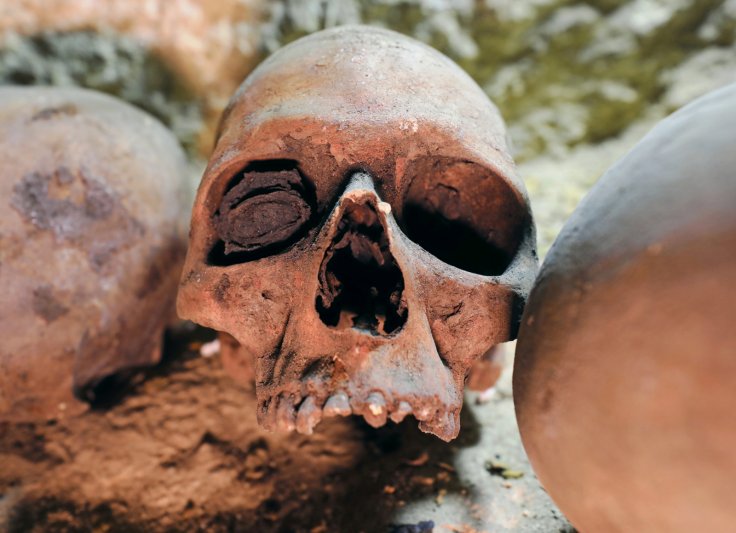
The world and history related to the ancient era are so mysterious that almost every day keen archaeologists in all around the world hope to discover something new that was never been revealed earlier. As a result, a group of researchers recently found a skull of a woman, who died around 2500-years-ago in an extremely peculiar position, near the town of Baucina, in Sicily, Italy.
In the research, which was published in June in a special cancer issue of the International Journal of Paleopathology, archaeologists stated that the strangely buried skull represents a woman, who died of cancer. But, the way it was placed inside an artificial cave dug out of the rock, it made them puzzled.
The study said, the deceased was aged between 35 and 50 when she died due to cancer, which spread to her skull and created 14 holes in it. As told by the researchers, they believe that cancer first emerged in the breast of the female and then it speeded to her skeleton.
The archaeologists stated that the burial formation was so weird that it looked like as if the skull of the woman was staring at the remains of at least 50 people, who were hidden inside. But, researchers did not find any other skeleton at that place. They clearly mentioned that there were clear signs of robbery in that tomb. So, if any gave good was buried along with the woman, it was stolen.
Researchers have no idea about other body parts of the woman and but they claimed that the looters who robbed the tomb at some point in time, did not cause any harm to the skull.
Roberto Miccichè, the researchers and an adjunct anthropology professor at the University of Palermo told the Live Science that it would be completely fine to assume that the skull was undisturbed, as the robbers entered the artificial cave through another way to get into the tomb immediately above the entrance.
Since the life-threatening disease, cancer was unknown to people when the woman became affected and died due to the illness, it may have appeared as a very unusual phenomenon and that is why people buried the skull facing 50 other dead bodies.
There is also another possibility that the deceased was a very reputed and respected female of her locality and because of that, her community people buried her like this, inside the artificial tomb.
Miccichè claimed that he agreed to the possible answers about the skull's position, "as the clinical appearance of metastases on the skull [with its scattered holes] may have impressed the afterlife perception of people who lived beside the individual."
In addition, he said, "Another possibility could be connected to a particular role occupied in life within the ancient community by the person to whom the skull belonged. Both of these interpretations are very hard to prove, as we do not have many similar cases that we can use for comparison purposes."
Miccichè and others from the university's archaeology department found the unusual skull in 2014 and now they hope to continue the research process. The team is about to start a new project "with the aim to explore the perception of death and illness among ancient cultures in Sicily and maybe we will be able to provide further information on this case under a broader social and sacred perspective."
In this era, when the humans stepped outside the technical boundaries to witness more exceptional findings, the study of bone and genome have provided a huge platform to unveil unknown facts. A few days ago, Professor Eske Willerslev, who holds the position at St John's College, University of Cambridge and University of Copenhagen and a lead researcher along with his team have come up with a new and more reliable theory about the origin of the Southeast Asian population after studying an 8,000-year-old skeletons' DNA. Prior to that, another group of scientists studied Hiroshima Bombing victim's bone to know the radiation dose.









